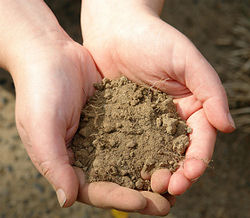
Harvard scientists say that pica (the eating of non-food items) is far more prevalent in Madagascar than previously thought and men are partaking as often as pregnant women. In the new study, Harvard’s Christopher Golden and colleagues from Madagascar Health and Environmental Research surveyed 760 people in the northeastern corner of the island nation and found that more than half had engaged in geophagy (the eating of soil).
“We found the practice, though somewhat concealed, is incredibly widespread in Madagascar,” Golden said. “Perhaps even more interesting, our findings suggest that the population that is engaging in this behavior doesn’t fit with the traditional characterization of pica.”
In earlier studies of pica, researchers found nearly all cases occurred in adolescents or pregnant women – periods of increased nutritional demands. As expected, Golden and colleagues found high rates of both pica and geophagy among women in Madagascar, but they were surprised to uncover equally high rates among men, and even observed cases of young children as young as five years old engaging in the behavior.
Among the men surveyed by the researchers, 63 percent admitted to geophagy, while 44 percent of children and a quarter of adolescent males also engaged in the practice. Though most often associated with pregnancy, the researchers also found that just over a quarter of non-pregnant women engaged in the behavior.
“We found no significant difference between men and women,” Golden said. “That suggests that sex is unimportant to the behavior, and that’s never been shown before. To be fair, it may simply be that the behavior hasn’t been studied in men because earlier studies had focused on pregnant women, but it also suggests that we should be asking question about both sexes and across all ages to fully understand the motivations for this behavior.”
One explanation for the seemingly high rate of the behavior, Golden explained, is that soil is a key component of a natural medicine called aody andro, used by many Malagasy people as a “good luck” medicine to avoid becoming sick. “It doesn’t fit into the strict definition of pica, because it’s not a craving, they’re using it to self-medicate,” Golden explained. “But that could account for part of the reason the practice seems to be so widespread.”
While the study doesn’t speculate as to why people in Madagascar engage in pica or geophagy – the two most popular theories suggest that people are absorbing nutrients like iron, zinc and magnesium from the soil, or that the soil acts as a natural de-worming treatment – Golden said he hopes to answer those questions with additional research.
Related:
Discuss this article in our forum
Savoring The Flavoring
Tackling obesity by manipulating gut flora
Gender slant on hygiene hypothesis could explain skewed disease rates










Comments are closed.